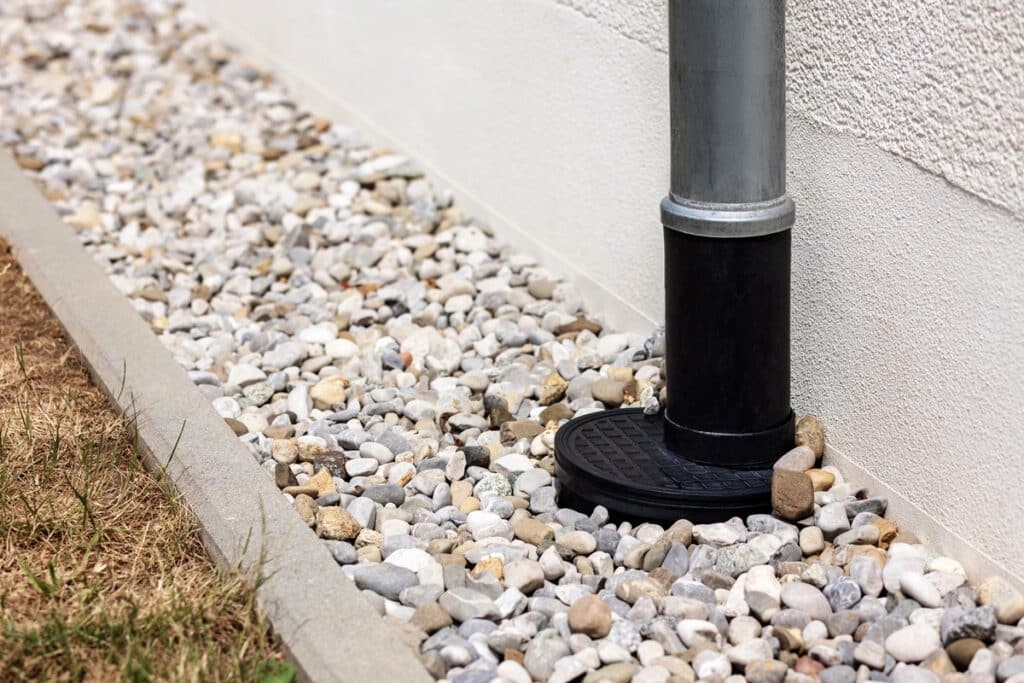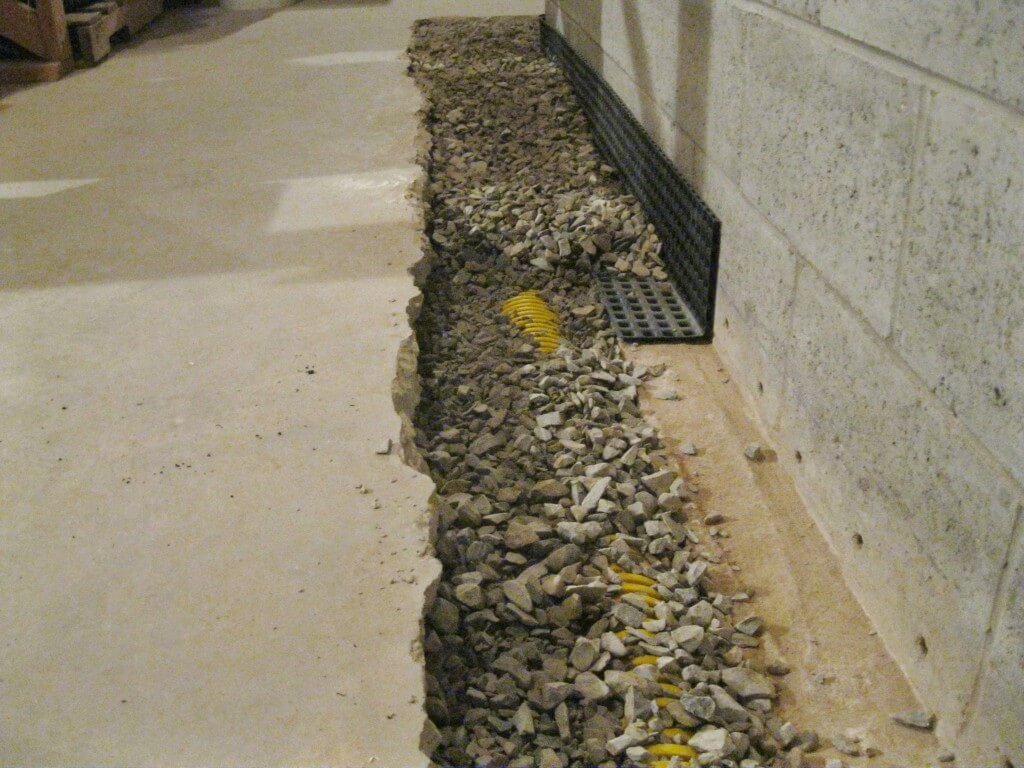The Essential Guide to Keeping Your French Drain for Long-Lasting Efficiency
Preserving your French drainpipe is crucial to its effectiveness and your property's protection. Normal checks can save you from costly fixings and water damage. You'll want to know what indications to look for and exactly how frequently to inspect your system. Plus, understanding the cleansing process can make a substantial distinction. Let's discover the necessary actions for ensuring your drain operates well for years ahead.
Comprehending the Function of a French Drain
A French drainpipe is a crucial part in taking care of water around your home. It directs excess water far from your structure, protecting against flooding and damage. When heavy rain drops, the drain collects water via a perforated pipe buried in crushed rock. This system allows water to flow easily, reducing stress on your cellar walls and lessening the risk of leaks.You may question just how it operates in practice. As water saturates the soil, gravity draws it toward the drain. The perforated pipeline records this water, carrying it to an assigned drainage location or tornado sewer. This procedure keeps your lawn dry and shields your home's structural integrity.Understanding exactly how a French drain features is vital to valuing its significance. By successfully channeling water away, it aids keep a dry and risk-free living environment. Keeping your French drainpipe in leading problem assurances you prevent costly repairs down the line.
Regular Assessments: What to Search for
Beginning by examining for any type of obstructions that may be obstructing water flow when you're examining your French drainpipe. Focus on signs of surface disintegration around the drainpipe, as this can show potential problems. Regular analyses will assist keep your drain system working effectively.
Obstructed Drain Evaluation
Exactly how can you inform if your French drainpipe is clogged? Initially, look for water pooling in your backyard, particularly after hefty rainfall. That's a red flag if you observe locations where water accumulates instead of draining. You need to also check the drain electrical outlet; if water isn't moving out as it should, there's likely a clog. Listen for unusual gurgling noises, which can indicate trapped air. In addition, check the drainpipe's surface area for any greenery growth, as origins can penetrate and clog the system. If you scent stuffy smells, it can direct to stationary water created by an obstruction. Consistently assessing these indications can help you preserve your French drain successfully and stop expensive repair services.
Surface Area Erosion Examine

Cleaning Your French Drain: Step-by-Step Overview
Cleaning your French drainpipe is crucial for maintaining it operating correctly. You'll require some particular devices and a clear process to ensure whatever runs efficiently. Allow's go through the steps and suggestions for maintaining your drain efficiently.
Tools You'll Need
To take on the task of cleansing your French drainpipe effectively, you'll intend to collect a couple of vital devices. Initially, order a strong pair of handwear covers to safeguard your hands from particles and sharp objects. A tiny shovel or trowel will assist you get rid of dirt or clogs around the drainpipe. For cleaning out the inside, a plumbing technician's serpent or a high-pressure water nozzle can be unbelievably helpful. You'll additionally need a container for gathering any kind of particles you take out. Having a garden hose on hand will certainly make it simpler to wash out the drainpipe and guarantee it's flowing efficiently. With these tools ready, you'll be set for an extensive cleaning session!
Cleaning Refine Actions
Start by reviewing the area around your French drainpipe for any visible particles or blockages. Remove fallen leaves, branches, or dirt that may block water flow. Next off, check the inlet and electrical outlet areas; clear any type of blockages to assure proper water drainage. Make use of a garden tube to flush the drain, routing water right into the inlet. This helps displace any type of gathered sludge or sediment. Think about utilizing a plumber's serpent to damage them up if you notice consistent obstructions. After cleaning, check the gravel around the drain; replenish it if it's gotten rid of. Confirm the drain covers are intact and safely in area to avoid debris from going into. Regular cleansing maintains your French drainpipe operating successfully.
Maintenance Frequency Tips
While normal maintenance is crucial for your French drainpipe's longevity, recognizing how usually to maintain it can make all the difference. Ideally, you should check your French drainpipe at the very least two times a year, preferably in springtime and loss. After hefty rainfall or snowmelt, look for clogs or particles. If you see any kind of standing water, it's time to clean your drain.In areas with hefty vegetation, more constant upkeep-- regarding every 3 months-- may be necessary. Furthermore, think about cleansing your French drain after major tornados or if you observe water merging in your backyard. By remaining positive, you'll assure your French drain features efficiently and safeguards your residential property from water damage. Routine checks will save you time and money in the long run.
Determining Typical Problems and Their Solutions
It's crucial to identify typical issues with your French drain and carry out effective solutions when click over here you see water pooling in your backyard or damp areas in your basement. One frequent trouble is blocking, frequently triggered by debris like fallen leaves or sediment. To repair this, you can use a pipes serpent or a high-pressure water jet to clear blockages.Another concern might be improper incline. Water will not stream away from your home if your drain isn't sloped appropriately. You can change the slope by excavating and rearranging the drain pipe.Lastly, look for damage or fractures in the drain itself. If you locate any, replacing the harmed sections is essential for peak performance. By resolving these concerns immediately, you'll assist ensure that your French drainpipe remains to function properly, safeguarding your home from water damage and keeping a completely dry, secure environment.
Seasonal Maintenance Tips for Your French Drainpipe
Attending to usual problems with your French drainpipe is just the very first step in guaranteeing its long-lasting performance. Seasonal upkeep is vital for peak performance. In the spring, clear away leaves and debris that might have collected throughout winter season. Inspect for any type of blockages in the electrical outlet or capture basin, as water requires a clear course to stream freely.During summer season, evaluate your drain for any type of signs of clearing up or changing dirt. Make particular it's still degree and operating effectively. As autumn techniques, clear out any fallen delegates avoid blockages before winter arrives.In winter, watch for freezing temperatures. Make certain your drainpipe isn't at danger of cold if you live in a cool climate. Insulating exposed pipelines can assist. Normal checks and prompt maintenance can prevent costly repair work and keep your French drain functioning efficiently year-round. Keep positive and enjoy assurance knowing your drain system remains in great form!
When to Call an Expert
Understanding when to call an expert can save you time and prevent more damage to your French drainpipe. It's a clear indication that your drain may be clogged or harmed if you see persistent standing water in your backyard. Don't ignore odd smells, as they can show sewer back-up or decay, which needs prompt attention.If you discover that your drainpipe isn't functioning effectively after attempts to tidy or maintain it, it's time to connect for specialist aid. Additionally, if you're unclear about the underlying concerns or lack the required tools, employing a specialist can offer tranquility of mind.Finally, if your French drainpipe is old or has actually experienced significant deterioration, expert assessment can identify whether article source repair services or full substitute is needed. Depend on the experts to guarantee your water drainage system functions effectively for several years ahead.
Tips for Avoiding Future Water Drainage Issues
To keep your French drain working successfully, consistently inspecting and keeping it can make all the difference. Beginning by getting rid of debris, leaves, and dirt from the surface and drainpipe openings. This stops obstructions that can bring about water back-up. Examine the crushed rock around the drainpipe; if it's compacted or worn down, think about adding fresh gravel to maintain suitable flow.Next, divert water away from your drain by making certain rain gutters and downspouts are clear and guiding water a minimum of 3 feet far from your foundation. Routinely check for any type of indicators of damages or drooping. If you see issues, resolve them immediately.Finally, think about mounting a catch or a filter container to trap bigger particles before it gets in the drain. By staying proactive with these suggestions, you'll lessen the danger of site web future drainage issues and keep your French drain in top shape.
Frequently Asked Questions
For how long Does a French Drainpipe Commonly Last?
A French drain commonly lasts around 30 to 40 years, depending upon the materials made use of and upkeep (Portland French Drain). If you stay on par with routine checks, you can prolong its lifespan also better
Can I Set Up a French Drainpipe Myself?
Yes, you can install a French drainpipe yourself if you've got the right devices and knowledge. Just ensure to intend thoroughly, follow neighborhood laws, and assurance correct water drainage to avoid future issues.
What Products Are Utilized in a French Drainpipe?
You'll require perforated pipeline, crushed rock, landscape material, and a strong drain pipe for your French drainpipe. These products help reroute water effectively, preventing flooding and keeping your building dry and secure from water damage.

Is a Permit Required to Mount a French Drain?
You'll likely require an authorization to set up a French drainpipe, relying on regional policies. Talk to your town to guarantee you adhere to any kind of essential standards and avoid possible problems during installation.
What Are the Costs Connected With French Drainpipe Upkeep?
Maintaining a French drain typically costs in between $100 and $500 yearly. You'll require to think about costs for cleaning, fixings, and assessments. Routine upkeep helps avoid bigger assurances and expenses your system works effectively for years - Portland French Drain. When you're checking your French drainpipe, start by examining for any kind of blockages that might be obstructing water circulation. By staying positive, you'll ensure your French drain functions properly and secures your residential property from water damage. When you see water merging in your yard or damp spots in your basement, it's crucial to determine typical concerns with your French drainpipe and carry out effective services. You can readjust the slope by excavating and rearranging the drain pipe.Lastly, check for damages or splits in the drainpipe itself. Inspect the gravel around the drainpipe; if it's compacted or deteriorated, think about adding fresh crushed rock to keep suitable flow.Next, divert water away from your drain by making certain rain gutters and downspouts are clear and routing water at the very least 3 feet away from your structure